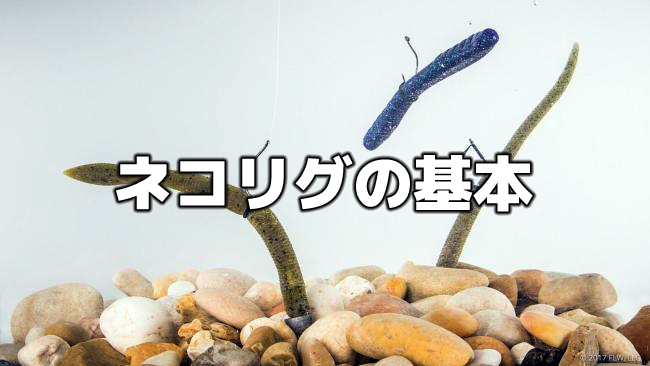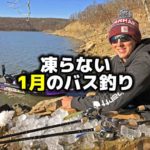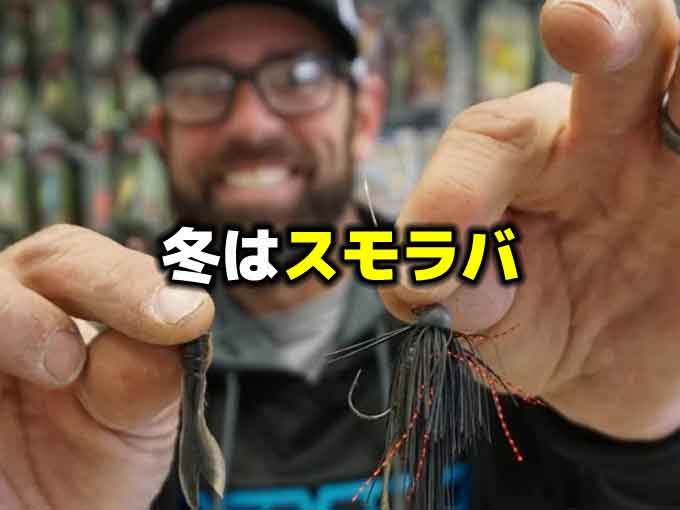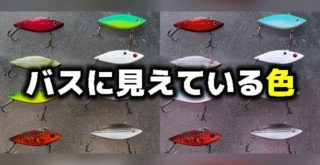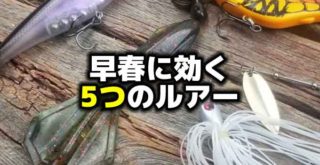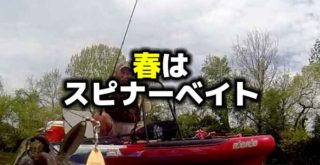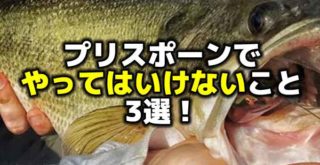プリスポーンバスが釣れるポイントを見つける

Photo by scout.com
こんにちは!店長の小山です!
本日は海外サイトより、”How to Stay Ahead of the Bass in the Prespawn”という記事を引用してご紹介いたします。
引用先:scout.com”How to Stay Ahead of the Bass in the Prespawn”by David A. Brown – 23 feb,2018(海外サイトです)
人間が寒くて長い冬もそろそろゆるんでくると感じるころ、バスも同じように春を感じているようですね。
バスにとって春は産卵(スポーニング)の季節です。
産卵をする前(プリ)の段階という意味で、プリスポーンと呼ばれていますが、産卵に使われる体力をあらかじめ蓄えておく必要があるということで、フィールドの様子はまだ冬にも近いこの段階であっても、バスの意識はずっと前向きなようです。
バスプロの皆さんや、バス釣りの上手な方の言うことには、越冬場所と産卵場所を知っていれば、プリスポーンのバスの居場所は分かると言いますし、バス釣り雑誌やプロのインタビューを見れば、狙うべきポイントを解説してあるものですが、それらしいところで釣っても、なかなかうまくいかないものです。
もっと詳しく知りたい、そんな風に思っている方は多いのではないかと思います。
この記事は、アメリカのフィッシングメディア「Wired2Fish」の記者、デビッド・ブラウン氏が、バスマスター・エリートプロ、ジェイソン・クリスティに、プリスポーンバスがどこでどのように集まっていて、どう釣っているのかを取材したものです。
色々なプロの意見を聞くことで、自分のホームフィールドにマッチした情報が得られるかもしれません。
ぜひ読んでみて下さい。
プリスポーンバスを先回りする
Towing a boat all over the country for professional bass fishing tournaments, Jason Christie has become intimately familiar with U.S. highway system — a mindset that carries into his fish location strategy. Specifically, he leverages the logic of seasonal migration routes for bass to keep ahead of their movements and ensure that he always has fish coming to him.
Referencing a lake’s main channel, creek arms, secondary channels and spawning flats, Christie offers a simple analogy.
“You have interstates, you have state roads, you have county roads and then you have driveways; your main traffic is on the interstates and your state highways. It’s the same way with these fish migrating.
“You’re going to get to these driveways and you’re going to have one or two fish there. The best place to see a lot of people on the interstate is a convenience store. That’s a staging area where people pull in; they eat, they rest. That’s a lot like how fish act whenever they’re transitioning— it’s little key areas where you’re going to have populations of fish.”
ジェイソン・クリスティは、プロのバス釣りトーナメントのために全国を駆け巡ることで、アメリカの高速道路には非常に詳しくなりました。このことは、トーナメントでのポイントの選び方に関係しています。具体的には、彼はバスの季節ごとの移動ルートの論理を活用して、動きを先回りし、常に彼のもとに魚が来るようにしているのです。
湖のメインチャンネル、クリークアーム、サブチャンネル、およびスポーニングエリアの見つけ方を、クリスティは簡単に例えてくれました。
「高速道路があります。国道があります。県道があり、次に市道があります。交通量が多いものと言えば、高速道路と国道ですよね。魚が移動するときも、これと同じです。」
「魚にとっての市道を見つけたとしても1、2匹の魚にしか出会うことはできません。高速道路で人に会うために最適な場所と言えば、サービスエリアです。そこは人々を引き寄せるステージングエリアです。人々はそこで食べ、休む。このように、魚が移動する季節にも同じような行動を起こします。多くの魚が集まるようなキーエリアが、そこにあるのです。」
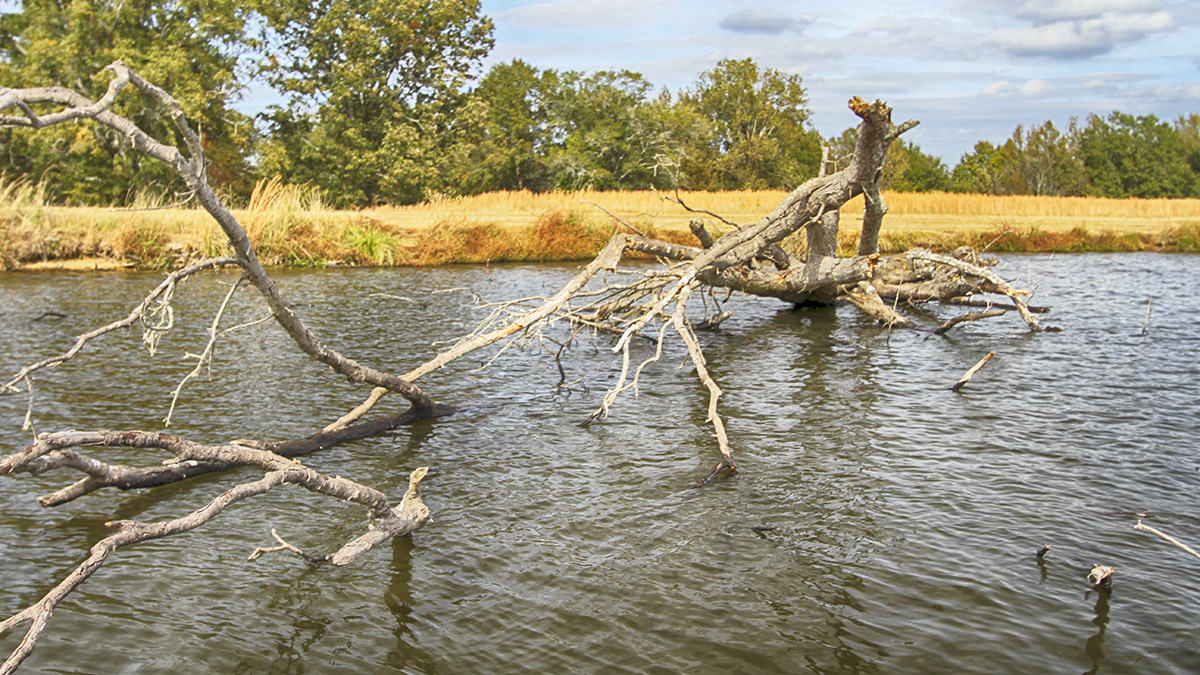
Photo by scout.com
バスを引き寄せるもの
Applying this to the prespawn movement, Christie said he wants to find areas that give fish the favorable combination of shallow water feeding and warming access, with deep water proximity. Points are a classic prespawn option, especially those secondary points inside a creek arm or pocket. Even more specifically, Christie likes a point with an abrupt drop into deeper water.
“Prespawn is a perfect example of how these fish will go shallow and pull back when it gets cold,” he said. “That’s why they’re going to hang around places that give them options of depth and structure.”
Another example: On a shallow reservoir where the lack of significant depths limits the prespawn option, Christie considers laydowns one of his best prespawn targets.
“The trunk might be in 2 feet of water, but the outer branches might reach all the way into the creek channel,” he said. “In the colder days, the fish will be out around the end of the tree, but if you get a warming trend, they’ll move up shallow around that trunk. This can change during the course of a day, so you have to know where those fish want to be, based on the conditions.
With these and other scenarios, Christie knows that prespawn success requires that you not only identify key staging areas, but apply an advance-and-fall back strategy that consistently keeps you on the receiving end of this seasonal movement.
Whether he’s cranking, twitching a jerkbait or dragging a jig, the Oklahoma pro wants to fish spots to which fish are coming, not those from which they’re departing.
クリスティは、プリスポーンの動きに当てはまるような、魚にとってシャローでのフィーディングとディープの暖かい水が隣り合った都合のいい組み合わせのある場所を探すべきだと言います。岬は昔からプリスポーン時期に良いと言われているポイントです。特に、クリークアームの中やワンドの中にある岬(メインレイクではない岬)です。さらに具体的に言えば、クリスティはディープへ急激に落ちる岬が好きです。
「プリスポーンは、寒くなった時に魚がディープに戻ってしまうというお手本のような例です。ですので、彼らは水深と地形変化のある場所の周りにサスペンドしたがるのです。」
もう一つの例:浅いリザーバーでは、適切な深さがないためにプリスポーンの選択肢が制限されますが、クリスティはレイダウンを最高の目標の1つと考えています。
「幹があるところは水深60センチかもしれませんが、先の枝はクリークチャンネルにまで達しているかもしれません。 寒い日には、魚は木の先端の周りにいるのでしょうし、暖かくなってくれば浅い幹の周りに移動してくるでしょう。このポジションは1日の中で変わることがありますので、条件に基づいて、その魚が今どこにいたいかを考える必要があります。」
これに限らすその他の状況においても、プリスポーン時期に成功するには、ステージングエリアを特定するだけでなく、キーとなる「進んだり戻ったりするような季節的な動き」を待ち伏せる側でいるための戦略を立てる必要があるとクリスティは考えます。
クランクを使おうが、ジャークベイトを使おうが、またはジグをズル引くかにかかわらず、クリスティは魚がやって来る場所で釣りたいと思っています。

Photo by scout.com
バスの状態から見抜けること
Not sure on the fish’s timing? Check out their paint job — it’ll often clue you in on the when and where.
“The best advice I can give is to really look the fish over when you catch one,” Christie said. “Those big, fat prespawn fish tend to run in schools. They’re heavy feeders, not like those skinny bank runners.
“If you catch a fish and it’s pretty pale, there’s a good chance it just got there and there will be more coming. But if you’re up there on the bank and you’re catching fish that are dark because their bodies have adjusted to deep water, that tells you that they’ve been there a while and they’re probably getting ready to make their next move.”
魚がどのタイミングにあるかどうかは分かるのでしょうか?それにはバスの状態をチェックしてください – これによりいつ、どこにいるかという手がかりになります。
「私ができる最高のアドバイスは、あなたが1匹キャッチした魚を見ることです。 それが大きくて脂肪の多いプリスポーンフィッシュであればそれは群れで動く傾向があります。 彼らはよく食う状態で、なにもないバンク沿いを泳いでいるような魚ではありません。」
「もし釣った魚が、ぼやけた模様をしているならば、それはディープからちょうどそこに来たばかりということであり、これからもっとそこへやって来るでしょう。 そして、あなたが岸沿いで釣った魚が暗い色をしているならば、ディープから上がってきてしばらくそこにいたため、体がだいぶそこに慣れてきたということなので、いよいよ産卵をする準備ができて動こうかという状態だと思います。」
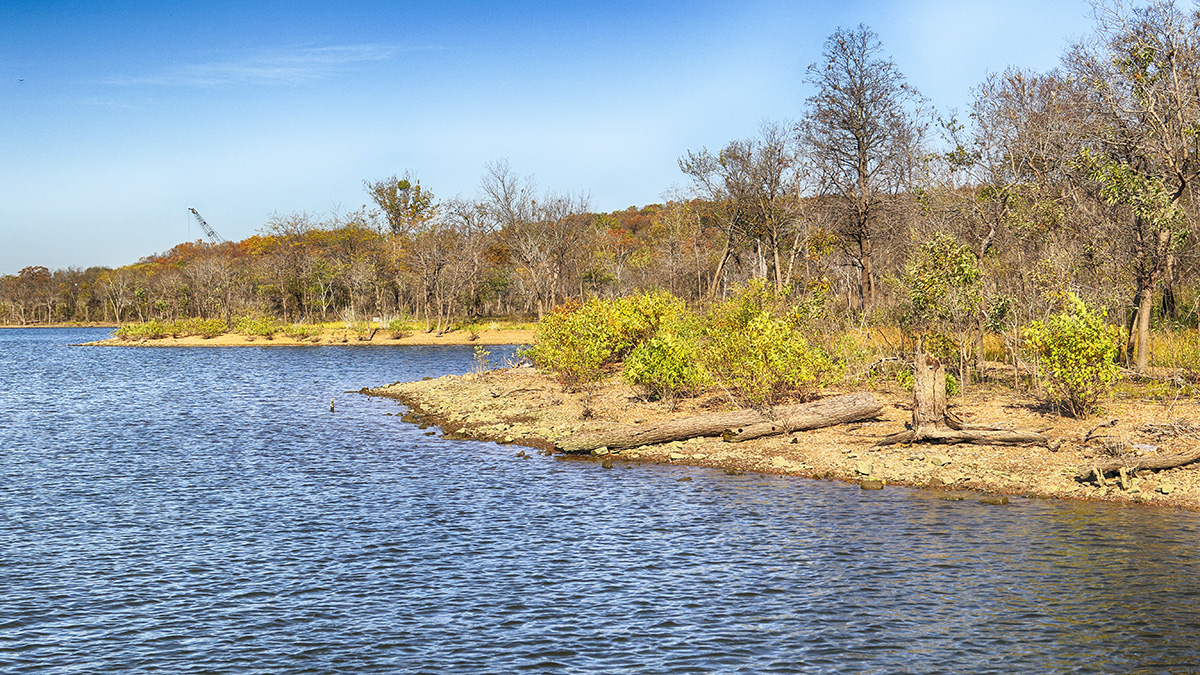
Photo by scout.com
アプローチを分解する
Taking all this into consideration, Christie suggests remaining aware of the return trips. The same folks you ran into at that convenience store a week ago, might smile at you again a week later.
“Timing is critical because these fish move in waves,” Christie said. “You may find a spot with no fish there, but a school of fish moves in and you work on them for a couple of days and then they’re gone. Five days later, another school moves in and you’re right back in the same scenario.
“But then you go vacant for a couple of weeks and then you catch those same schools coming back to the lake.”
Once your fish have spawned, return to those key fall-back spots and, once again, you’ll have the action coming to you.
For these staging areas a lipless crankbait, jerkbait and jig can be hard to beat. As they get more into cover shallow crankbaits, spinnerbaits and soft plastics become more of his staples for lure choices.
こいうことをすべて考慮に入れて、クリスティはバスが戻るときのルートも知っておくべきだと提案します。 一週間前にそのサービスエリアにいたのと同じ人たちが、一週間後にまたあなたと会えるかもしれません。
「これらの魚たちの動きには波があるため、そのタイミングが重要です。」とクリスティは言います。 「あなたが見つけたスポットに魚はいなかったかもしれませんが、魚の群れは入ってきます。そして2,3日間そこで過ごしたら、去っていきます。 5日後、別の群れが入ってきたと思ったら、同じようにまた去っていきます。」
「そして、数週間後になると、この前釣った同じ群れがまた戻ってくるのです。」
あなたの釣った魚が産卵していたら、再びキーとなる「進んだり戻ったりする場所」に戻ってください。うすればもう一度、同じようにあなたのもとに魚がやって来るでしょう。
これらのステージングエリアでは、バイブレーション、ジャークベイト、ジグを打つのが効果的な場合があります。 彼らがよりシャローカバーの中へ入った場合は、クランクベイト、スピナーベイト、ワームを選ぶことが、彼らにより口を使わせることになります。
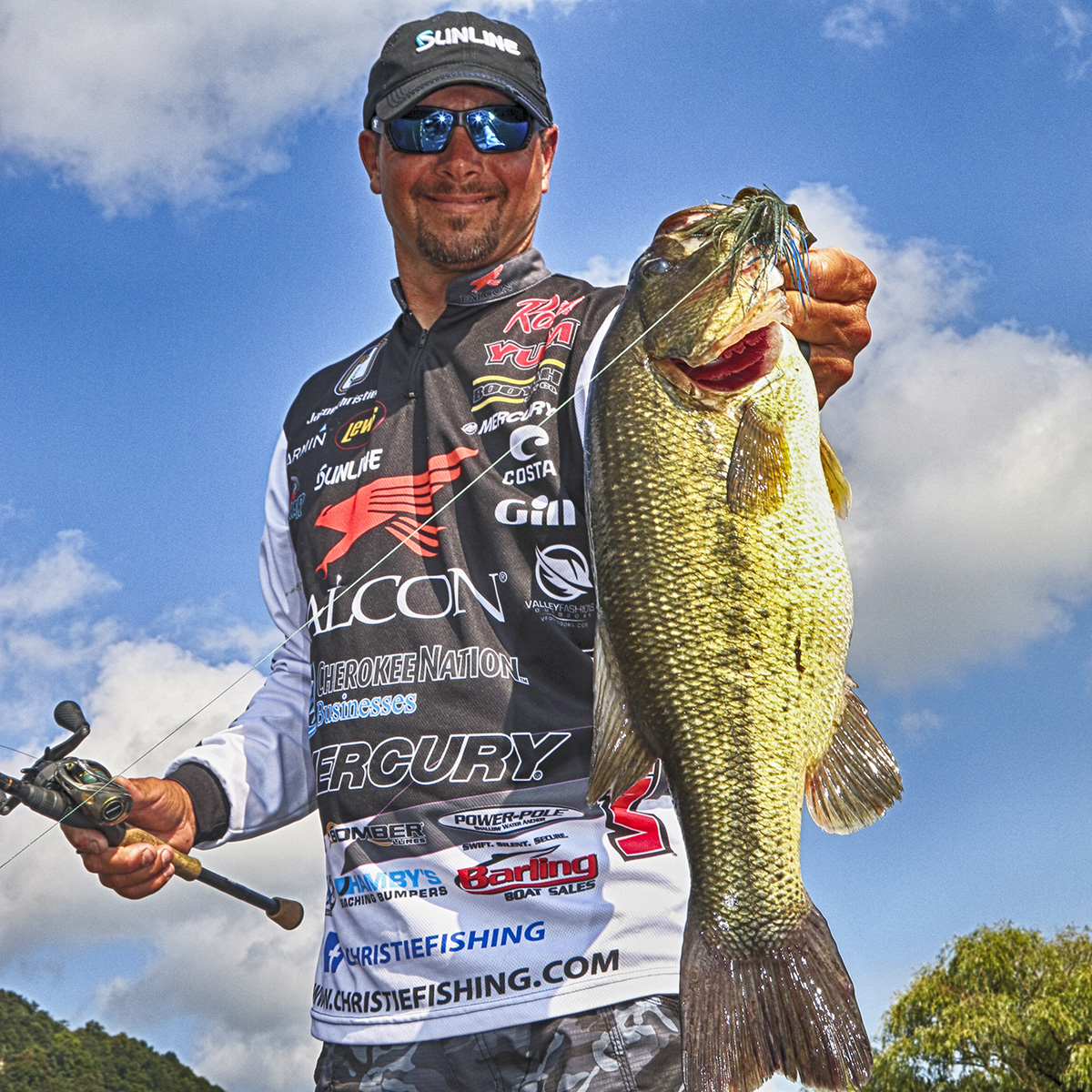
Photo by scout.com
いかがでしたか。
雑誌などで勉強したはずのポイントで釣っているのに、釣れない。そんな時は、タイミングが間違っているだけなのかもしれないということなんですね。
できれば、バスの動きを追いかけるというより、待ち構える動きを身に着けた方がいいという考え方でした。
そしてそれは、1本釣ってみれば判断できるということでしたね。
まあ、それができれば苦労しないのですが…(笑)
しかしこれは、なにも自分が釣った魚に限ったことではありません。誰かが釣ったのを見つけたらすかさず声をかけて、魚を見せてもらえばいいのです。または、フィールドで会った釣り人さんに、今日釣った魚がどうだったか、濃い色だったか薄い色だったかを聞けば、そのフィールドの今の状態を読むことができるかもしれません。
いくら事前に最新情報を仕入れてフィールドに立ったとしても、現場の今の情報にはかないませんもんね。
特に早春、プリスポーンの時期はね、そうみたいですからね…。
私はフィールドでは気軽に声をかけてしまうタイプですので、もしフィールドで私に会って話を聞かれてうっとうしいと思っても、ウソを教えるのはやめてくださいね(笑)
さて、釣りに行きたくなってきましたね。みなさんは、どこでプリスポーンフィッシュを釣るのでしょうか。
それでは、また。
毎度ありがとうございます!







